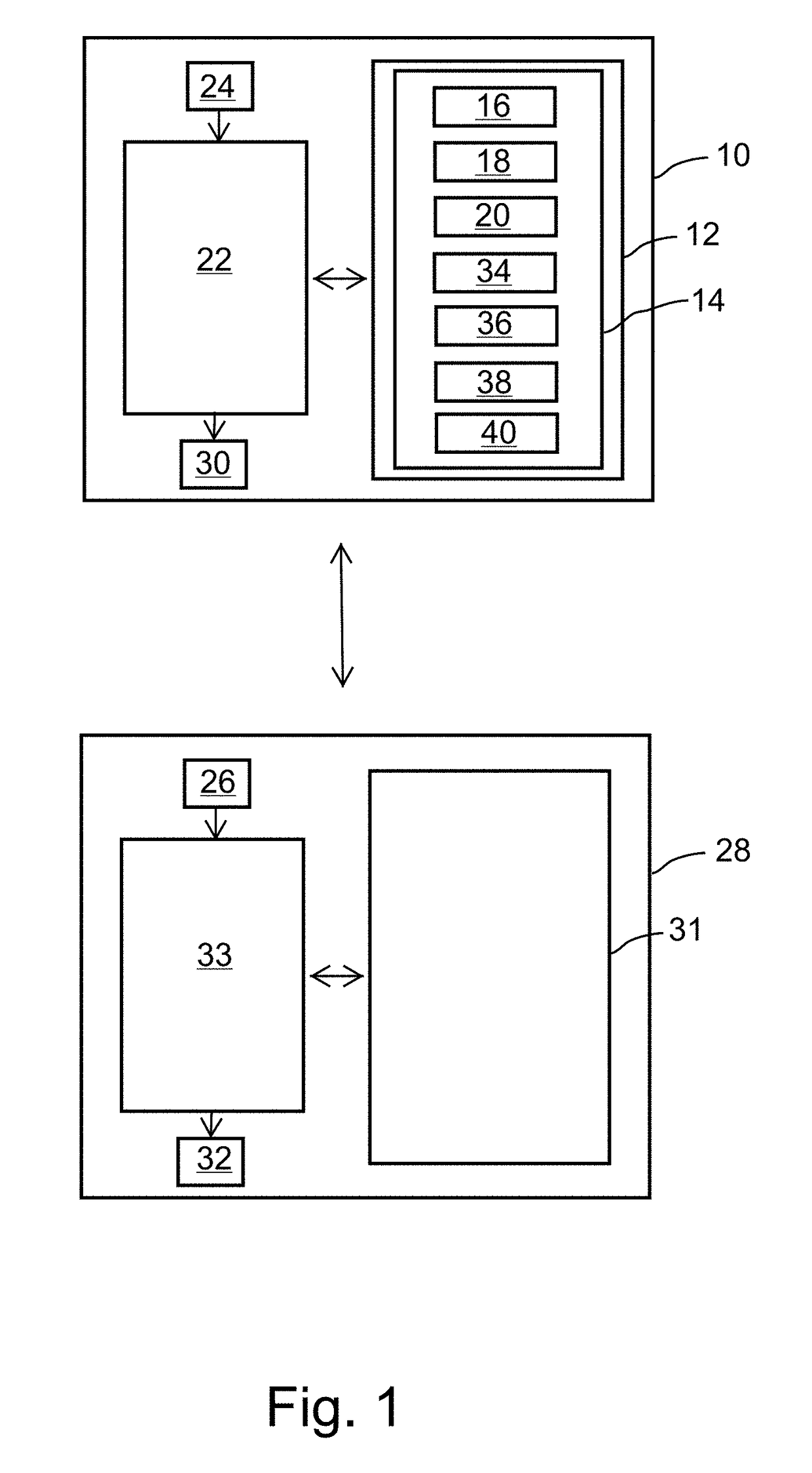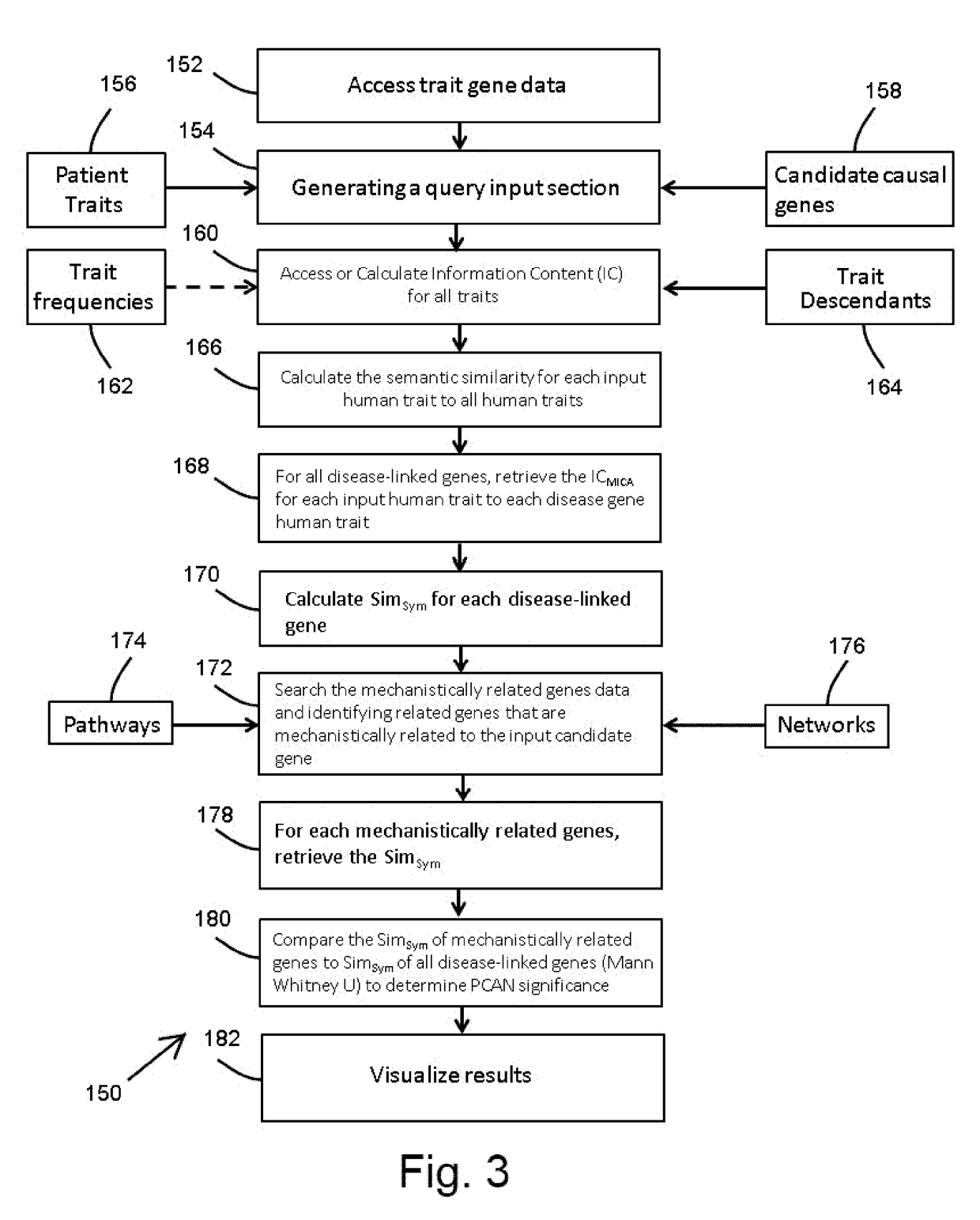Method and system for quantifying the likelihood that a gene is casually linked to a disease
a probability and gene technology, applied in the field of methods and, can solve the problems of large socio-economic burden, large clinical experience in assessment, and inability to quantitatively assess confiden
- Summary
- Abstract
- Description
- Claims
- Application Information
AI Technical Summary
Benefits of technology
Problems solved by technology
Method used
Image
Examples
Embodiment Construction
[0021]A genes biological function is not the consequence of the encoded product working in isolation but rather the culmination of a highly coordinated sequence of interactions with other molecules that cooperate as a functional module. Such functional modules can be considered as coherent biological pathways or processes. If molecules work together to perform a particular biological function, then it follows that genetic disruption of different members of the same module will result in a similar phenotype; functional modules may display a close consensus phenotype. This raises the possibility of an indirect phenotype-based method for variant prioritization that assesses the consensus phenotype similarity across a community of interacting proteins in a way that does not require an existing diagnostic hypothesis with a corresponding set of known causal genes and hence does not suffer from the resultant limitation in scope.
[0022]Mendelian diseases are often the physical manifestation ...
PUM
 Login to View More
Login to View More Abstract
Description
Claims
Application Information
 Login to View More
Login to View More - R&D
- Intellectual Property
- Life Sciences
- Materials
- Tech Scout
- Unparalleled Data Quality
- Higher Quality Content
- 60% Fewer Hallucinations
Browse by: Latest US Patents, China's latest patents, Technical Efficacy Thesaurus, Application Domain, Technology Topic, Popular Technical Reports.
© 2025 PatSnap. All rights reserved.Legal|Privacy policy|Modern Slavery Act Transparency Statement|Sitemap|About US| Contact US: help@patsnap.com



